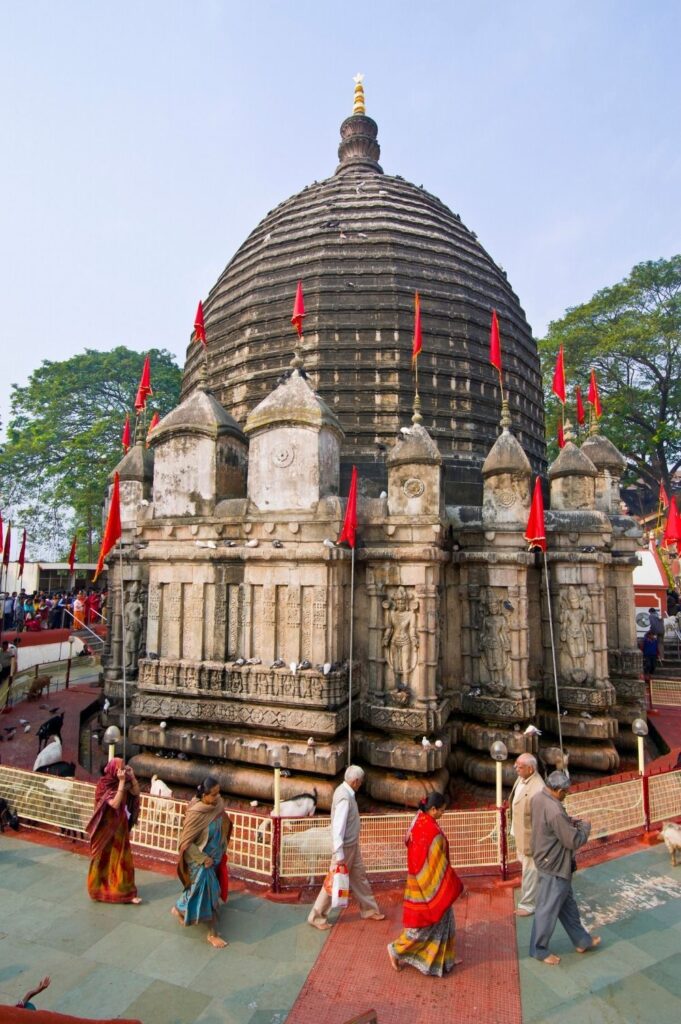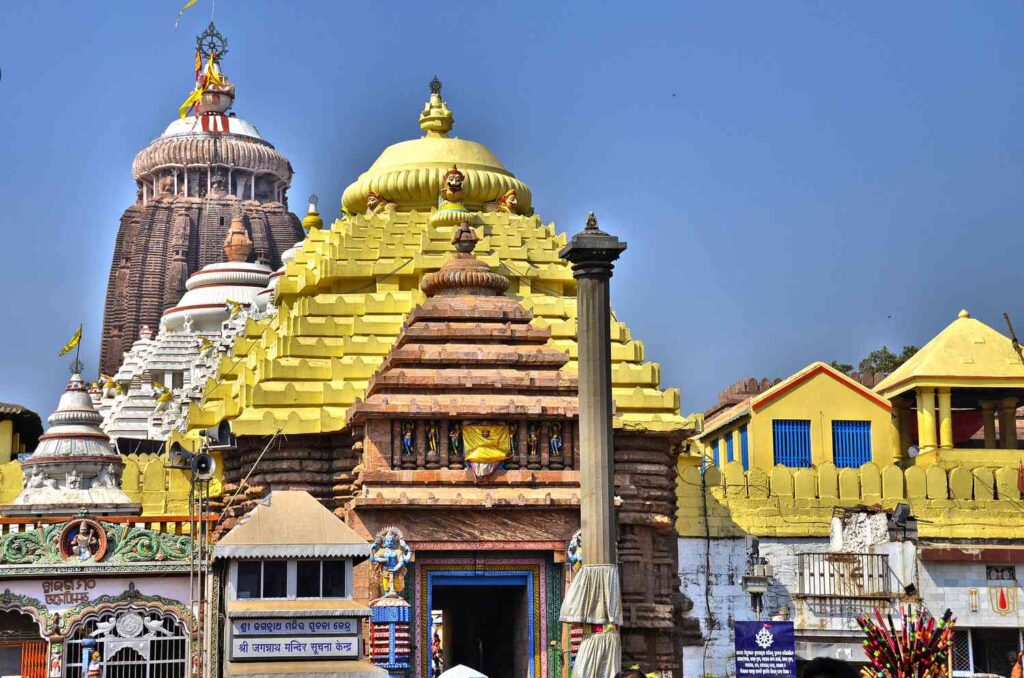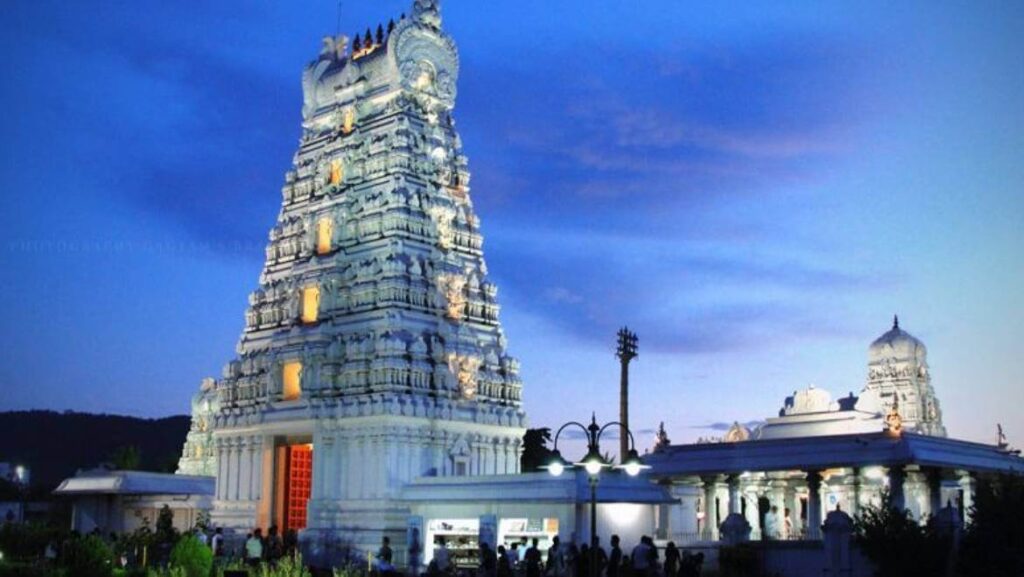The Kamakhya Temple, perched atop the Nilachal Hill in Guwahati, Assam, is one of the most revered spiritual centers in India. As a prominent Shakti Peetha, it holds immense significance for devotees of Hinduism, particularly those who follow the Tantric traditions. The temple is dedicated to Goddess Kamakhya, a manifestation of Goddess Shakti, and is renowned for its unique rituals, rich history, and vibrant festivals. This article delves into the temple’s origins, architecture, religious importance, festivals, and its cultural impact.
Historical Background
Origins and Mythology
The Kamakhya Temple is one of the 51 Shakti Peethas, sacred sites associated with the legend of Goddess Sati. According to Hindu mythology, when Sati’s body was dismembered by Lord Vishnu to pacify Lord Shiva’s grief, her yoni (womb) fell at the site of Kamakhya, sanctifying it as a powerful spiritual center. The temple is believed to have been worshipped since ancient times, with references in texts like the Kalika Purana and Yogini Tantra.
Historical Development
While the exact origins of the temple are debated, archaeological evidence suggests its existence dates back to the 8th–9th century during the reign of the Kamarupa kings. The temple was rebuilt in the 16th century by the Koch dynasty king Nara Narayan after it was partially destroyed. Over centuries, it has been a focal point for both Hindu and Tantric worship, drawing pilgrims from across India and beyond.
Architectural Marvel
Unique Design
Unlike traditional Hindu temples with towering spires, the Kamakhya Temple features a distinctive beehive-shaped shikhara (dome). Constructed primarily of stone and brick, the temple’s architecture blends elements of the Nagara style with local Assamese influences. The sanctum sanctorum, located underground, houses no idol but a natural stone formation symbolizing the yoni of Goddess Sati, kept moist by a natural spring.
Temple Complex
The Kamakhya Temple is part of a larger complex that includes smaller shrines dedicated to other deities like the Dasa Mahavidyas (ten wisdom goddesses), Lord Ganesha, and Lord Shiva. The complex is adorned with intricate carvings, sculptures, and stone inscriptions that reflect the rich artistic heritage of Assam. The temple’s location on Nilachal Hill offers panoramic views of the Brahmaputra River, adding to its serene ambiance.
Religious Significance
Center of Tantric Worship
Kamakhya is a major center for Tantric practices, which emphasize the worship of divine feminine energy (Shakti). The temple is unique for its reverence of the creative and reproductive aspects of the goddess, symbolized by the yoni. Devotees believe that worshipping at Kamakhya grants spiritual liberation, fertility, and fulfillment of desires.
The Sacred Sanctum
The garbhagriha (inner sanctum) is accessible via a dark, narrow staircase leading underground. The absence of an idol and the presence of the natural stone formation make the worship experience deeply mystical. Devotees offer flowers, sindoor (vermilion), and other items, and the temple priests perform rituals with great reverence.
Festivals and Rituals
Ambubachi Mela
The Ambubachi Mela, held annually in June, is the most significant festival at Kamakhya Temple. It celebrates the goddess’s menstruation cycle, symbolizing fertility and the cycle of life. During this time, the temple remains closed for three days, as it is believed the goddess is resting. On the fourth day, the temple reopens, and thousands of devotees, including sadhus and tantriks, gather to seek blessings. The festival is a vibrant blend of spirituality, rituals, and cultural performances.
Other Festivals
Other important festivals include Durga Puja, Navratri, and Manasa Puja. During these celebrations, the temple is adorned with flowers, lights, and decorations, and special rituals are performed to honor the goddess. The temple also attracts devotees year-round for personal rituals like marriage ceremonies and fertility prayers.
Cultural and Social Impact
Pilgrimage and Tourism
The Kamakhya Temple is a major pilgrimage destination, attracting millions of devotees and tourists annually. Its serene location, coupled with its spiritual aura, makes it a must-visit site in Northeast India. The temple also boosts local tourism, with nearby attractions like the Brahmaputra River, Umananda Temple, and Assam’s natural beauty drawing visitors.
Empowerment and Feminism
The temple’s focus on the divine feminine and the celebration of natural processes like menstruation challenge societal taboos, promoting a message of empowerment and respect for women. This aspect has made Kamakhya a symbol of feminist spirituality in modern times.
Community Engagement
The temple plays a vital role in the local community, providing employment through tourism and supporting traditional crafts like Assamese silk weaving and metalwork. The annual festivals also foster social unity, bringing together people from diverse backgrounds.
Visiting Kamakhya Temple
Accessibility
Located just 7 km from Guwahati’s city center, the temple is easily accessible by road. The nearest airport, Lokpriya Gopinath Bordoloi International Airport, and Guwahati Railway Station connect the city to major Indian cities. Local transport like taxis and auto-rickshaws are available for the uphill journey to the temple.
Guidelines for Visitors
Visitors are expected to dress modestly and respect the temple’s sanctity. Photography is prohibited inside the sanctum, and non-Hindus may face restrictions in certain areas. The temple offers special darshan options for those seeking a quicker visit, especially during peak festival times.
Challenges and Preservation
Environmental Concerns
The influx of pilgrims has raised concerns about environmental sustainability, including waste management and deforestation around Nilachal Hill. Efforts are underway to promote eco-friendly practices during festivals like Ambubachi Mela.
Preservation of Heritage
The Archaeological Survey of India and local authorities work to preserve the temple’s ancient architecture and artifacts. Regular maintenance ensures the temple retains its historical and spiritual charm for future generations.
Conclusion
The Kamakhya Temple stands as a testament to India’s rich spiritual and cultural heritage. Its unique blend of Tantric worship, architectural beauty, and vibrant festivals makes it a beacon of devotion and mysticism. Whether you are a spiritual seeker, a history enthusiast, or a curious traveler, a visit to Kamakhya Temple offers an unforgettable experience, steeped in divine energy and timeless tradition.



